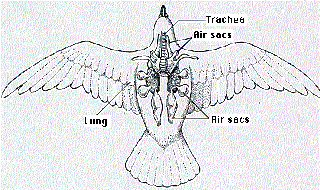No, I wasn’t referring to a human visitor – this one is avian. Look a little closer… there she is!
Meet one of our visitor Bald Eagles. This one looks to be a female. I don’t say that because of her coloration. Many people who aren’t familiar with birds of prey assume that they are like songbirds – males and females are colored differently. Not so with raptors. There are very few raptors that have different coloration in males and females (called sexual dimorphism). Most raptors are colored identically. The best way to tell the difference is in their size. In most cases with birds of prey, the males are up to one-third SMALLER than the females. So, this visitor is probably a female because of her large size. She is also a juvenile – probably only in her second or third year, because of all the mottling on her feathers.
This eagle's size and white mottling indicate that it is probably a 2 or 3 year-old female
Over the winter months (and sometimes in the summer, too) we often get Bald Eagles that visit our site and hang out in the trees over our enclosures. These eagles are usually here to try and snag a bit of free food. Winter months are tough for all animals – food is much harder to find. The wild eagles see our captive eagles (ones that are here permanently due to injuries) and come down to check them out. They also sometimes fly into the enclosures to grab a bite of our eagles’ food. Don’t worry; our eagles aren’t suffering because of the theft. We feed our birds plenty of food each day.
Now this does sometimes cause a little confusion for our visitors – they see an eagle fly out of one of the enclosures and think our birds are escaping. So, if you are at our site and see a Bald Eagle fly out of an enclosure, just enjoy the view and snap a picture of our wild Bald Eagle visitors!
Submitted by Laura MacLeod, World Bird Sanctuary Education Coordinator
Submitted by Laura MacLeod, World Bird Sanctuary Education Coordinator


















































